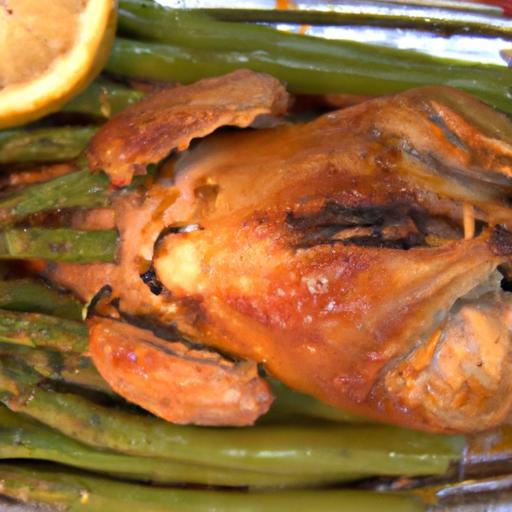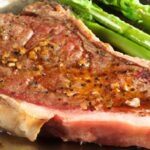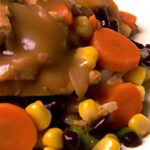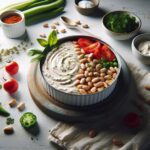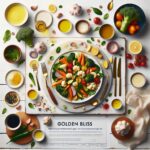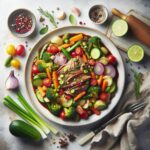When it comes to roasting, the secret to a perfect, evenly cooked meal often lies beneath the surface-not just in the ingredients, but in the kitchen tools you choose. Among the unsung heroes of every roasting adventure are two humble contenders: parchment paper and aluminum foil. Both promise to keep your culinary creations moist, flavorful, and mess-free, but which one truly earns the title of the best roasting companion? In this article, we’ll unravel the strengths and quirks of parchment paper and foil, guiding you to the ideal choice that transforms ordinary roasting into a delightfully effortless art. Get ready to elevate your kitchen game with insights that turn everyday cooking into a masterpiece!
Parchment Paper vs. Foil: Best Roasting Companion Revealed
When it comes to roasting, nothing impacts your final dish quite like the choice between parchment paper and foil. Each material plays a unique role in heat distribution, flavor development, and texture enhancement, making it essential to understand their subtle differences. From perfectly crisped skin to deeply infused spices, selecting the right roasting companion transforms ordinary ingredients into culinary masterpieces.
Prep and Cook Time
- Prep Time: 15 minutes
- Cook Time: 30-45 minutes (depending on ingredient and oven temperature)
Yield
Serves 4-6, depending on the recipe and portion size.
Difficulty Level
Medium – Perfect for home cooks and enthusiasts looking to elevate their roasting game.
Ingredients
- 1 large whole chicken or 2 lbs mixed vegetables (e.g., carrots, potatoes, bell peppers)
- 2 tablespoons olive oil or melted butter
- 1 teaspoon sea salt
- ½ teaspoon freshly ground black pepper
- 2 teaspoons fresh herbs (thyme, rosemary, or sage), finely chopped
- 2 cloves garlic, minced
- 1 sheet parchment paper or aluminum foil (approx. 15×20 inches)
Instructions
- Preheat your oven to 400°F (200°C). Line your roasting pan or tray with either parchment paper or foil depending on your preference.
Expert tip: If using foil, lightly grease it to prevent sticking. - Prepare the ingredients by patting the chicken or vegetables dry with paper towels. Toss your vegetables or rub the chicken evenly with olive oil or butter for optimal caramelization and moisture retention.
- Season generously with salt, pepper, fresh herbs, and garlic. The roasting companion influences how these flavors are locked in-parchment encourages gentle steaming, maintaining vibrant herb aromas; foil traps moisture tightly, creating a tender finish but sometimes softening crisp textures.
- Place the ingredients on your prepared sheet. For parchment, fold edges gently to create a loose packet that traps steam without sogginess. For foil, seal edges tightly for superior heat conduction and moisture retention.
- Roast in the preheated oven for 30-45 minutes. Check doneness about halfway through by carefully opening the packet to avoid steam burns. Adjust timing depending on ingredient thickness and desired texture.
- For a crunchy finish, remove foil or parchment in the last 5-10 minutes and roast uncovered to allow direct heat to crisp skins and edges.
Chef’s Notes
- Flavor and Texture Differences: Parchment paper allows heat to circulate gently, preserving delicate flavors and ensuring vegetables remain tender-crisp, ideal for light roasting. Foil, being a superior heat conductor, locks in juices and intensifies roasted aromas, perfect for larger proteins or dense root vegetables.
- Safety and Environmental Tips: Parchment is compostable if uncoated but check for non-stick treatments. Aluminum foil is recyclable but should be clean before disposal. Avoid using foil with acidic foods (like tomatoes or citrus), which can react and alter taste.
- Variations: Try combining both-wrap food first in parchment and then loosely cover with foil to maximize moisture without sacrificing caramelization.
- Make-Ahead: Pre-season and wrap overnight. Roasting fresh the next day will deepen flavors effortlessly.
Serving Suggestions
Present your roasted masterpiece directly from the parchment or foil packet to preserve moisture and aroma. Garnish with sprigs of fresh herbs and a drizzle of extra virgin olive oil or a touch of finishing salt. Pair with roasted garlic aioli or a tangy chimichurri for contrasting brightness. Serve alongside a crisp green salad or buttery mashed potatoes for a comforting, balanced plate that celebrates the subtle art of roasting.

Understanding Heat Distribution and Material Impact
Choosing parchment paper favors a gentler approach to roasting due to its breathability, allowing moisture to escape and preventing sogginess while delivering even heat. Foil’s reflective surface can create hotspots but excels at sealing in steam, which accelerates cooking and tenderizes the interior of your ingredients. This duality shapes texture drastically-think crispy skin with foil versus tender, subtly steamed vegetables with parchment.
| Material | Heat Reflection | Steam Retention | Best Used For |
|---|---|---|---|
| Parchment Paper | Moderate | Low (vented) | Vegetables, delicate proteins, baking |
| Aluminum Foil | High | High (sealed) | Roasting large cuts, braising, retaining moisture |
For further insights on roasting techniques and material science visit Serious Eats, a trusted culinary resource.
Explore more about perfect roasting methods in our Ultimate Roasting Guide for additional recipes and expert tips.
Q&A
Parchment Paper vs. Foil: Best Roasting Companion Revealed – Q&A
Q1: What’s the fundamental difference between parchment paper and foil when it comes to roasting?
A1: Think of parchment paper as the gentle, non-stick whisperer that keeps your food from sticking and burning, thanks to its silicone coating. Foil, on the other hand, is the versatile heat conductor and protector, a shiny shield that locks in moisture or crisps edges depending on how you use it.
Q2: Can I use parchment paper and foil interchangeably for all roasting needs?
A2: Not quite! Parchment paper shines in moderate oven temperatures (up to about 450°F) and is perfect for roasting vegetables or baking fish where you want less mess and gentle heat. Foil, sturdy and heat-resistant, is your go-to for high-heat roasting or when you want to trap steam and flavors, like with a whole chicken or foil packet meals.
Q3: Which roasting companion helps food brown better-parchment paper or foil?
A3: Parchment paper generally promotes better browning because it allows moisture to evaporate, resulting in that coveted golden crust. Foil, especially when wrapped tightly, can trap steam, leading to softer, less crispy textures unless you leave it tented or open.
Q4: Is there a health or safety edge to choosing parchment paper over foil (or vice versa)?
A4: Parchment paper is typically safer for acidic foods, as foil can sometimes react and impart metallic tastes or discoloration. Additionally, parchment’s non-stick nature means less added fat is needed, promoting healthier roasting. Just avoid using foil with very acidic ingredients like tomatoes or citrus to prevent a chemical reaction.
Q5: What about cleanup and environmental impact?
A5: Parchment paper simplifies cleanup with its non-stick surface and tends to be compostable or biodegradable if unbleached and free from coatings. Foil-while recyclable-often ends up contaminated with food, complicating recycling. For eco-conscious cooks, parchment may edge out foil when used thoughtfully.
Q6: Can combining parchment paper and foil enhance roasting results?
A6: Absolutely! Use parchment paper to line your roasting pans for easy cleanup and to prevent sticking, then tent foil loosely over the food to retain moisture without steaming it excessively. This combo can yield a beautifully roasted, juicy interior with a crisp exterior.
Q7: Which roasting companion ultimately wins the crown?
A7: The best roasting companion depends on what you’re cooking and your desired result. For gentle roasting with less mess and better browning, parchment paper is a subtle hero. For high heat, moisture control, or versatility, foil stands strong. Armed with both, you’re ready to roast like a pro!
Key Takeaways
In the great culinary showdown between parchment paper and foil, the best roasting companion ultimately depends on your kitchen needs and the flavors you crave. Parchment paper, with its natural non-stick charm and gentle heat embrace, is perfect for delicate dishes and a fuss-free cleanup. Foil, on the other hand, stands as the heavyweight champion of heat retention and versatility, sealing in juices and creating crispy edges that make roasted dishes truly sing. Armed with this knowledge, you can confidently choose your roasting partner, transforming every meal into a flavorful masterpiece. So next time you fire up the oven, remember: the secret to spectacular roasting lies in the humble sheet beneath your dish.
